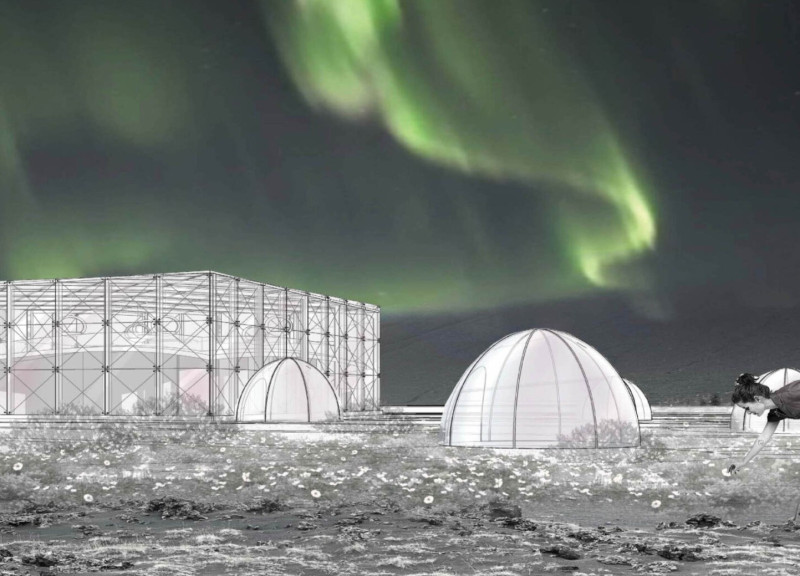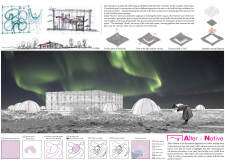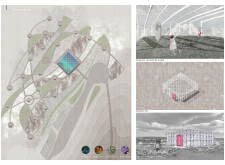5 key facts about this project
The architectural design of a coffee shop aims to create an inviting place for visitors while emphasizing the beauty of the surrounding environment. Positioned between a volcano and a lake, the coffee shop functions as an exhibition hall that celebrates nature. The design concept incorporates elements of the landscape into the structure itself, offering a unique connection to the scenic views available from various points within the space.
Conceptual Framework
The design focuses on lifting a part of the landscape, which is then covered in glass. This approach allows visitors to enjoy clear views of the volcano from inside the coffee shop. Areas within the building are designed to be transparent, reinforcing the link between indoor and outdoor spaces. Curved walls inspired by the shapes of the Aurora lights create intimate areas while also adding to the visual appeal of the interior.
Functionality and Circulation
The layout includes two entrances to streamline movement throughout the coffee shop. The primary entrance serves visitors directly, while the secondary entrance supports staff operations. This division helps set apart public areas from private ones, enhancing the efficiency of everyday operations. By organizing these spaces carefully, the design maximizes the usable area and reduces unnecessary transitions as people move through the building.
Sustainability Strategies
An important aspect of the design is its focus on sustainability. The plan includes a system for collecting rainwater, with specific areas of the shelter designed to capture and direct this water into underground storage. It is estimated that this system can gather about 8,800 liters of rainwater annually, making it a valuable resource for the coffee shop. This initiative reinforces a commitment to environmental responsibility while supporting the functionality of the space.
Material Considerations
The design also emphasizes the reuse of materials, suggesting the demolition of existing structures to repurpose materials for the new floor finishes. Among the materials mentioned, steel and reused plastic are highlighted, particularly in the construction of small domes that facilitate flexible outdoor seating. This focus on adaptable spaces not only contributes to sustainability but also enhances how visitors interact with the environment.
In summary, the coffee shop integrates with its landscape, allowing visitors to appreciate both the beauty of nature and the architecture itself. The roof structure includes a viewing platform that encourages people to take in the sights of the lake and the volcano, completing the design's goal of fostering a connection to the surrounding environment.






















































